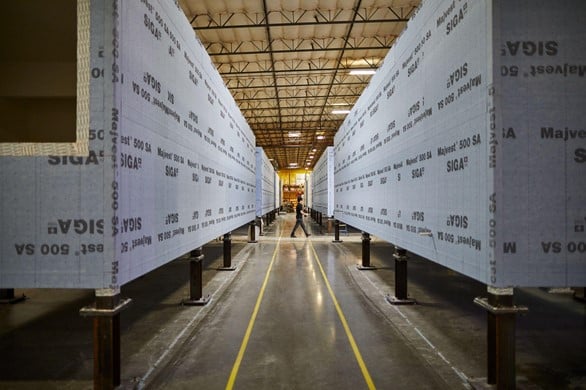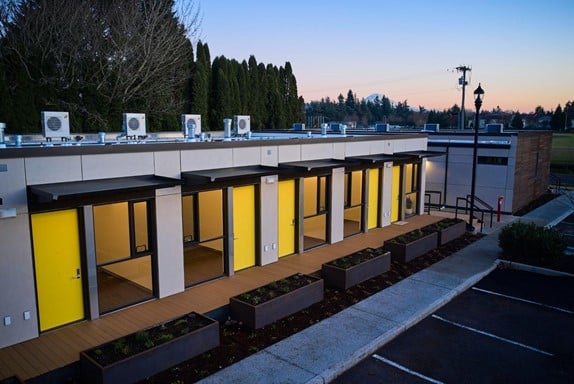Reading time: 8 minutes
Our country faces enormous challenges, with many of the proposed solutions rooted in the theoretical – not grounded in the realities of technology, politics, and finance. Without viable solutions, business as usual is economically and environmentally unsustainable. We must address our most fundamental challenges to stave off existential threats and provide a vision for a better future.
Housing provides perhaps the greatest challenges and greatest opportunities for creating a more sustainable tomorrow. Currently, the cost of developing new housing in the U.S. is rising far faster than income. The way we build and operate housing puts unrelenting pressure on our climate and our electrical grid. Simply put, the way we develop housing is not sustainable. The solution necessarily entails reforming how we build housing.
These reforms include shifting the focus from a one project at a time mentality to imagining how the market will look after the next thousand projects are built, how those projects are interrelated, how to reduce costs, and how to manage risk aversion, and the need to maximize profits by every actor in the process. The question everyone should be asking is: What will it take to bend the curve and reimagine an industry where developers compete based on innovation, quality, and efficiency?
The path to solving the housing crisis runs through development, not construction. Innovations like panelized components, 3D printing, and indoor construction may improve quality and reduce waste over time. However, new construction techniques cannot meaningfully reduce the cost to build because they are merely inputs into a larger process. It is the developer who controls the financing, the timeline, risk, and reward. Innovative products sold into the development process fight for margins amid constrained project budgets, while the developer’s objective is long-term, tax-advantaged real estate ownership. The developer views every dollar saved during construction as $10 – $20 in equity. The developer will always win the margin battle because each dollar is simply worth more to them than it is to any other party. Margin competition is the reason that so many construction product companies die, and why they will not solve the housing crisis.

The Blokable Building System is designed to consistently produce high-quality, low-cost, zero energy ready housing
A developer who can build higher-quality, lower-cost projects has a tremendous advantage: they can manufacture real estate equity and accelerate the creation of truly affordable housing. Such a developer would integrate various technological advances — like architectural and design-for-manufacturing software, high-performance materials, and new fabrication methods — to design, engineer, manufacture, and assemble multi-story apartment buildings that set new standards for quality and speed. This is how Vertically Integrated Modular (VIM) development works. Vertically integrating the development process creates a clear incentive for the developer to invest directly in innovation. Every dollar saved in building or operations translates directly into $10 to $20 in real estate value, depending on market conditions. The result is that the VIM developer can produce real estate at a total cost equal to or less than the debt financing that other developers put on a similar finished project. And because the VIM process is standardized, any new efficiencies can be transferred to the next project to lower its development cost.
Manufacturing equity is the holy grail of development and the opportunity to revolutionize the housing market. Developers have an obligation to their investors to deliver returns. Embracing a non-traditional approach could reduce costs and generate an enormous investment opportunity for market-rate rental apartments. However, a VIM developer can also use their competitive advantage in real estate to benefit a much broader population; they can apply the same product and process innovations to slash the cost to build affordable housing, while setting new high standards for quality. A perfect example is Blokable’s project in Auburn, Wash., which was financed through an innovative partnership with the State of Washington, and was completed through a GMAX contract at less than half the region’s average cost per door. VIM development passes lower costs directly to underserved communities in the form of equity and the opportunity to own their real estate and build wealth. Housing, developed at a lower cost using the same vertically integrated process, is the vehicle for capital markets to create equity and access to opportunity.
Serving the market and the underserved, while creating a business structure for truly scalable housing development, has been our focus at Blokable since our founding in 2016. With this split-market model, both market-rate and Affordable to Own models benefit from each other and form the basis for cost reduction and efficiency of scale. VIM is the single platform that guarantees the cost and schedule and generates new equity for market-rate and not-for-profit housing development.

Blokable at Phoenix Rising in Auburn, Wash., the world’s first Vertically Integrated Modular (VIM) housing development
VIM is the platform on which scalable housing development rests, reducing the cost and risk for a new generation of developers to build infill multi-family housing for rent and purchase in any market where there is a need for more housing. This integrated platform brings land acquisition, design and architecture, engineering, finance, manufacturing, construction, and ownership into a single stack, all enabled by the same innovative modular building system. VIM is the template for other developers to innovate and create more efficient products that meet the country’s housing requirements in the coming decades — Net Zero Energy, Affordable to Own, and lower development costs.
Fortunately, this concept isn’t theoretical. Blokable and VIM outline a path forward that requires no changes in regulations or zoning; it simply provides a better model for investment and development. We have built many Net Zero buildings in Washington, California, and Colorado. These long-term buildings approved by State and local officials cost less to build and have reduced heating and cooling costs by 60% compared to traditional construction in the same market. Our project in Auburn, Wash., is occupied by residents who earn less than 30% of the Area Median Income. Had we not developed the project using our VIM platform, the project simply would not have been built, and many of those living in this community would still be homeless.
The technology, legal, finance, and regulatory foundation is in place to move Vertically Integrated Modular development to the next phase. Innovation has improved everything from cars we drive, how we heat and cool our homes and businesses, how we communicate, and how and where we work. While wildly successful in other markets, innovation has made little impact in housing development and thus little impact on the housing crisis.
The currency of real estate development is equity. To unlock the actual value of innovation for real estate, we must transform the development process itself, generating new real estate wealth and unlocking new possibilities for affordable housing. Every step forward from here can lower costs, reduce emissions and waste, and move the market closer to true sustainability and affordability. This is the opportunity before us. To make it a reality for consumers and governments, we must no longer accept a business-as-usual approach. Our communities, our economy, and our environment depend on it, and Vertically Integrated Modular development can deliver.
